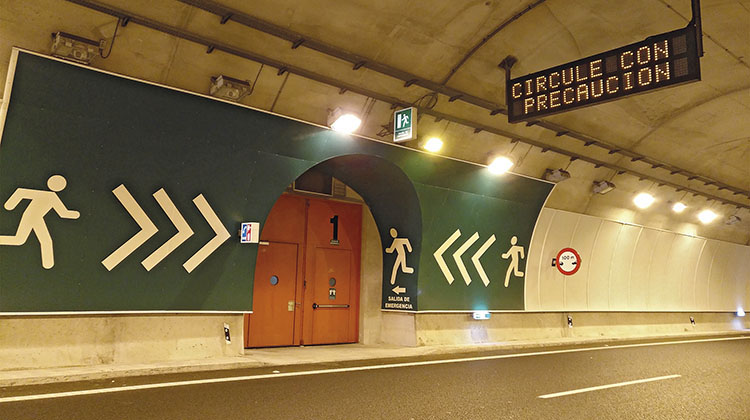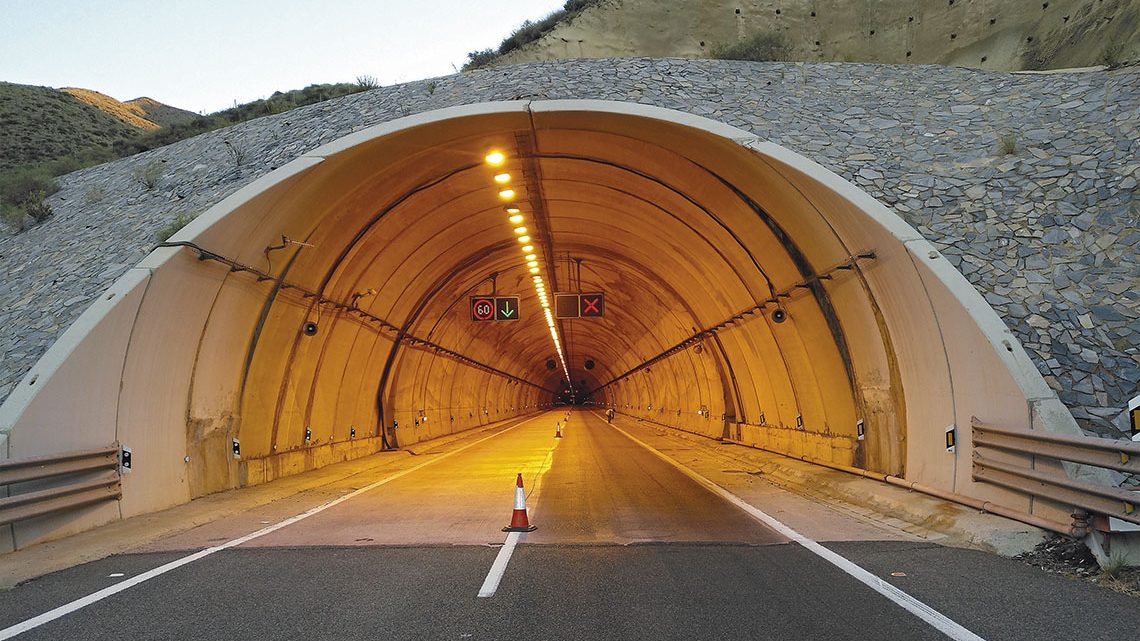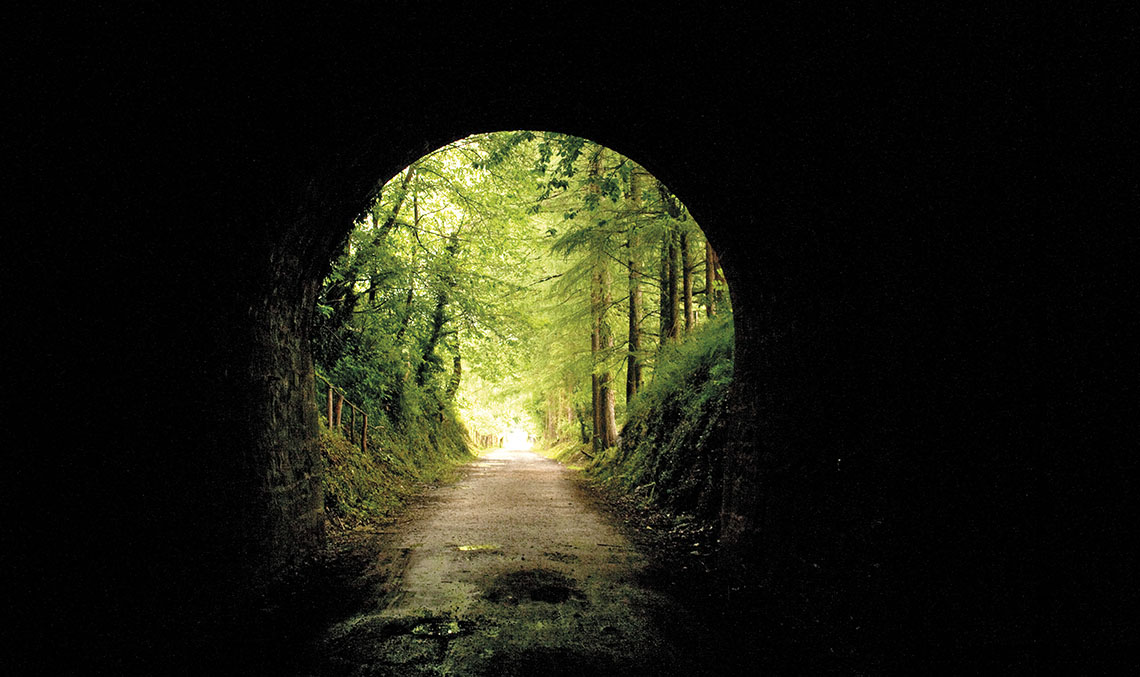On 24 March 1999, at around 11 a.m., a refrigerated lorry carrying 9 tonnes of margarine and 12 tonnes of flour began to burn inside the Montblanc tunnel. About 2 kilometres from the Italian entrance, when the smoke was already thick, the driver stops the lorry in the central area of the tunnel, approximately 6 kilometres from the Italian entrance and 6 kilometres from the French entrance. Within seconds, the lorry explodes. Because it’s a bi-directional tunnel, a queue of vehicles forms on both sides of the burning vehicle. Alarms are activated and the tunnel is closed to traffic in both directions, but 25 vehicles with 39 people inside are already stopped or driving towards the burning lorry from the French side. The smoke is heading towards the French entrance. In barely half an hour, the smoke travelled the 6 km distance and exited through the French entrance, partly aided by the mechanical ventilation that was activated by workers on the Italian side.
Several rescue attempts are made, but all are unsuccessful. The fire lasts for 53 hours. Once the blaze had been put out, firefighters entered the tunnel and, sadly, found 39 victims. All had died in the first stages of the fire due to smoke inhalation.
Two years later, on 24 October 2001, there was a collision between two lorries inside the Gotthard Tunnel, which links Italy and Switzerland beneath the Alps. A few minutes after the collision, a large fire breaks out and temperatures inside the tunnel exceed 1,000°C. The fire burns for 20 hours and causes part of the tunnel to collapse. When rescue services enter, they find 11 victims.
The company has also carried out other work such as risk assessments for 42 tunnels located on the Trans-European Network
Safety requirements in Spain
Following these accidents, the European Commission decided to draft legislation on safety measures in road tunnels for all its Member States. Therefore, on 29 April 2004, the European Parliament and the Council adopted Directive 2004/54/EC on minimum safety requirements for tunnels in the Trans-European Road Network.
Although this directive applies only to tunnels located on the Trans-European road network, when transposed into Spanish law by Royal Decree 635/2006, of 26 May, on minimum safety requirements in State road tunnels, no distinction was made between tunnels located on the Trans-European Network and other tunnels, in the belief that they should all have a similar level of safety. The royal decree also increases European safety requirements, so that all tunnels currently operating on Spanish roads are affected by the regulation in one way or another.
In 2016, the Directorate-General for Roads entrusted Ineco with the drafting of the first projects, which included the development of the Tunnel Adaptation Plan as the first assignment. There are a total of 354 tunnels on Spanish roads, of which 41 are on the toll road network and another three belong to the first-generation highways, all of which are managed under concession contracts. The remaining 310 belong to the network managed directly by the Directorate-General for Roads.
Following an analysis of the equipment of these 310 underground tunnels, it was concluded that 118 already meet the minimum safety requirements set out in the Royal Decree, and therefore the remaining 192 tunnels require attention. Of these, 90 are located on the Trans-European Network and 102 on other state roads.

Work on the 192 tunnels, which are being brought into line with European regulations, is expected to be completed in 2026. / PHOTO_INECO
Among other works, Ineco has drafted 22 adaptation projects, which include a wide variety of actions: road signalling, the installation of traffic lights, variable messaging panels, road surface improvement treatment, ventilation, upgrading of SCADA, CCTV and DAI, environmental control systems, fire protection systems, radio communications, public address systems, electrical installation, toxic liquid drainage, new emergency galleries, waterproofing and soundproofing improvements.
A further 21 projects were awarded in three lots to different consultancy firms. Ineco also provides support to the MITMA (Ministry of Transport, Mobility and Urban Agenda) in the drafting of tender specifications, bid evaluation and the preparation and review of study orders and subsequent modifications. As the Adaptation Plan progresses, some projects are being sub-divided in order to accelerate the tendering of tunnels falling within the scope of European Directive 2004/54/EC (tunnels longer than 500 metres located in the Trans-European Network).
In April 2021, Ineco began a new project to bring the Xeresa and Mascarat tunnels into line with the royal decree. Of the 53 tunnel projects on the road network managed directly by the State, Ineco is in charge of 32, involving a total of 104 tunnels.
The company has also carried out other work over the years, such as risk assessments for 42 of these Trans-European Network infrastructures. The objective was to assess, in accordance with the Ministry’s Risk Analysis Methodology, whether these tunnels could be classified as safe, or whether any additional measures were required. Once the improvements have been implemented, all of these can now be considered safe, on the basis of this methodology.
Two new tasks have been added to Ineco’s activities in the Tunnel Plan, which is scheduled to last until November 2022. Firstly, the control and monitoring of some of the works and secondly, the drafting of a plan to improve energy efficiency in the lighting of tunnels on the state network.
The work to upgrade the 192 tunnels is expected to be completed in 2026, after a major investment of more than 500 million euros. Once completed, the time may be right for a new plan, with the aim of converting the tunnels into smart infrastructures, thanks to new technologies and materials, connecting them to future autonomous vehicles, which, together with 5G, will become a reality in the next few years.






